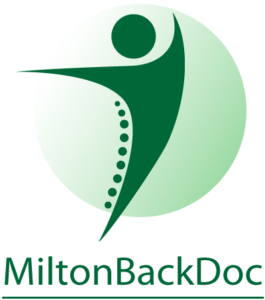“Deep Tissue” massage is a common request in almost any massage therapy office. Usually, when patients are requesting, or indicating a preference for “Deep Tissue” massage, they’re trying to request a firmer pressure be used in the massage to achieve effects at tissue layers that are deeper relative to the skin surface. Despite how common the use of the term “Deep Tissue” may be, I would argue that it’s a misnomer.
Depth of effect is achieved not only through the pressure applied by the therapist, but also through the pliability or relaxation of the more superficial (closer to the skin) tissues – which may include muscle, but also connective tissue such as fascia, the time spent on the area and the types of techniques used. To be sure, techniques that traditionally employ a lighter pressure, such as vibratory techniques are not, by definition, “deep tissue” techniques, and techniques traditionally applied for “deep tissue” work, may not achieve any significant depth if the more superficial tissues are not appropriately prepared.
Depth and pressure are two separate measures that may correlate, but may not depending on the patient presentation that day. All Massage Therapists, if attempting to achieve an effect on a deeper tissue/muscle, should be employing the appropriate techniques for the patient’s presentation at that time. In certain environments, more notably those where lighter work is the norm (ie: a relaxation-based environment), the term “deep tissue” may be used to denote a massage where the therapist is prepared to employ techniques and strategies that permit more effect at less superficial tissue layers. It also may be used to differentiate between therapists that have the physical stamina or strength to deliver firmer pressure consistently, vs. those that are less confident in delivering firm pressure.
Pressure is measured in force/square area, while depth is measured in distance. “Deep” is not a measure of pressure, and therefore, while the phrase “deep pressure,” may conjure up visions of tissues closest to the joint being manipulated, the truth is that far more than pressure goes into ensuring those tissues are targeted. Appropriate preparation of the overlying tissues through lighter techniques, stretching and joint mobilization can allow for greater depths of work to be achieved, and patient and therapist positioning will contribute greatly to allowing the therapist to target soft tissue techniques to specific muscle groups.
If a patient finds they benefit more from firmer techniques that involve more pressure, then the conversation that needs to take place between the therapist and patient should centre around what pressure the patient feels most comfortable with, instead of around the “depth” of tissues the therapist is attempting to target. As therapists, we need to start informing our patients of the best language to use to receive the treatment applications from which they benefit most.
A good massage therapist will always strive to deliver a massage using an approach that will benefit the patient most, keeping in mind their safety, current symptoms, their biomechanics and the patient’s preferences, whether that involves a firmer or lighter pressure, or some of both.


